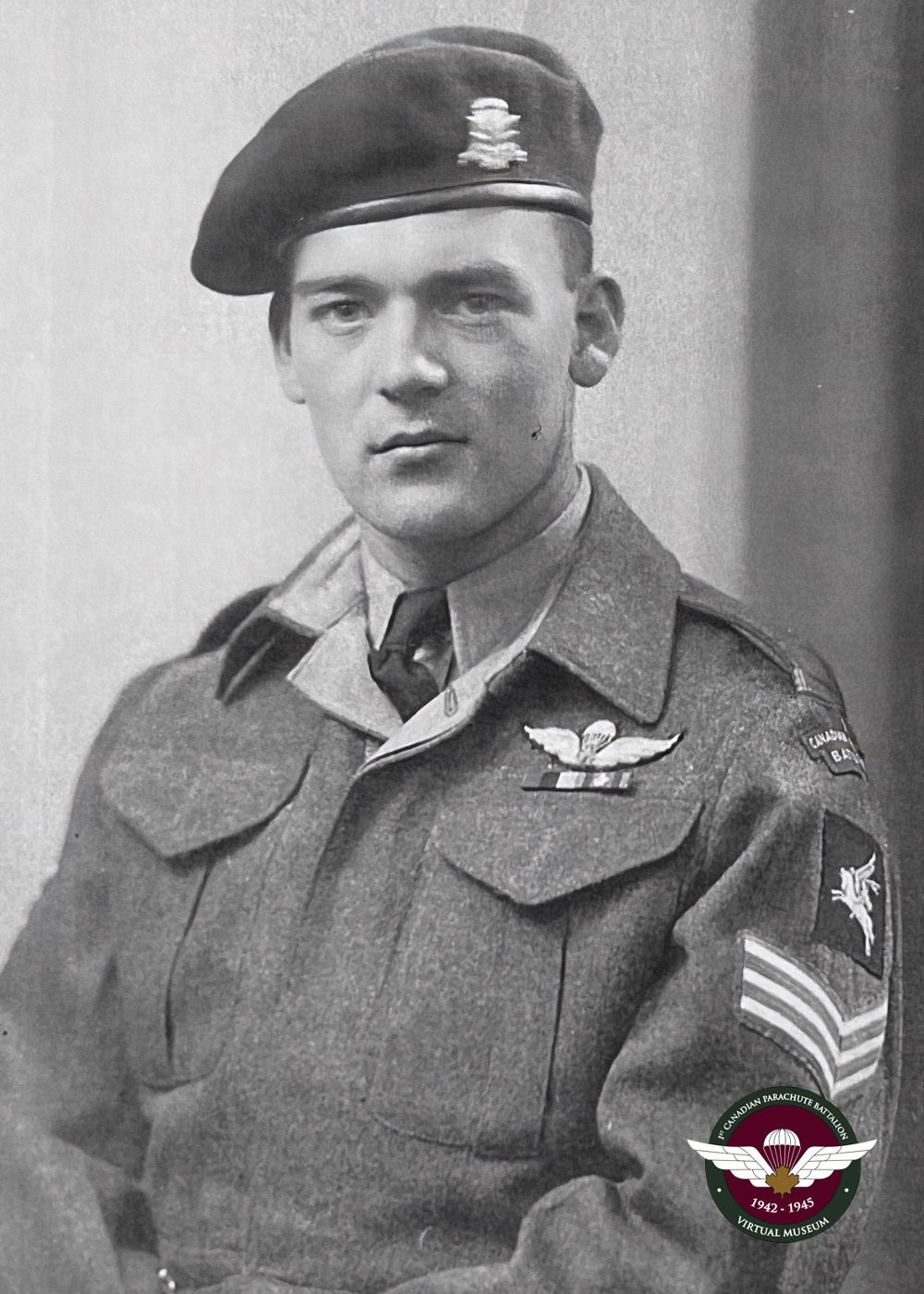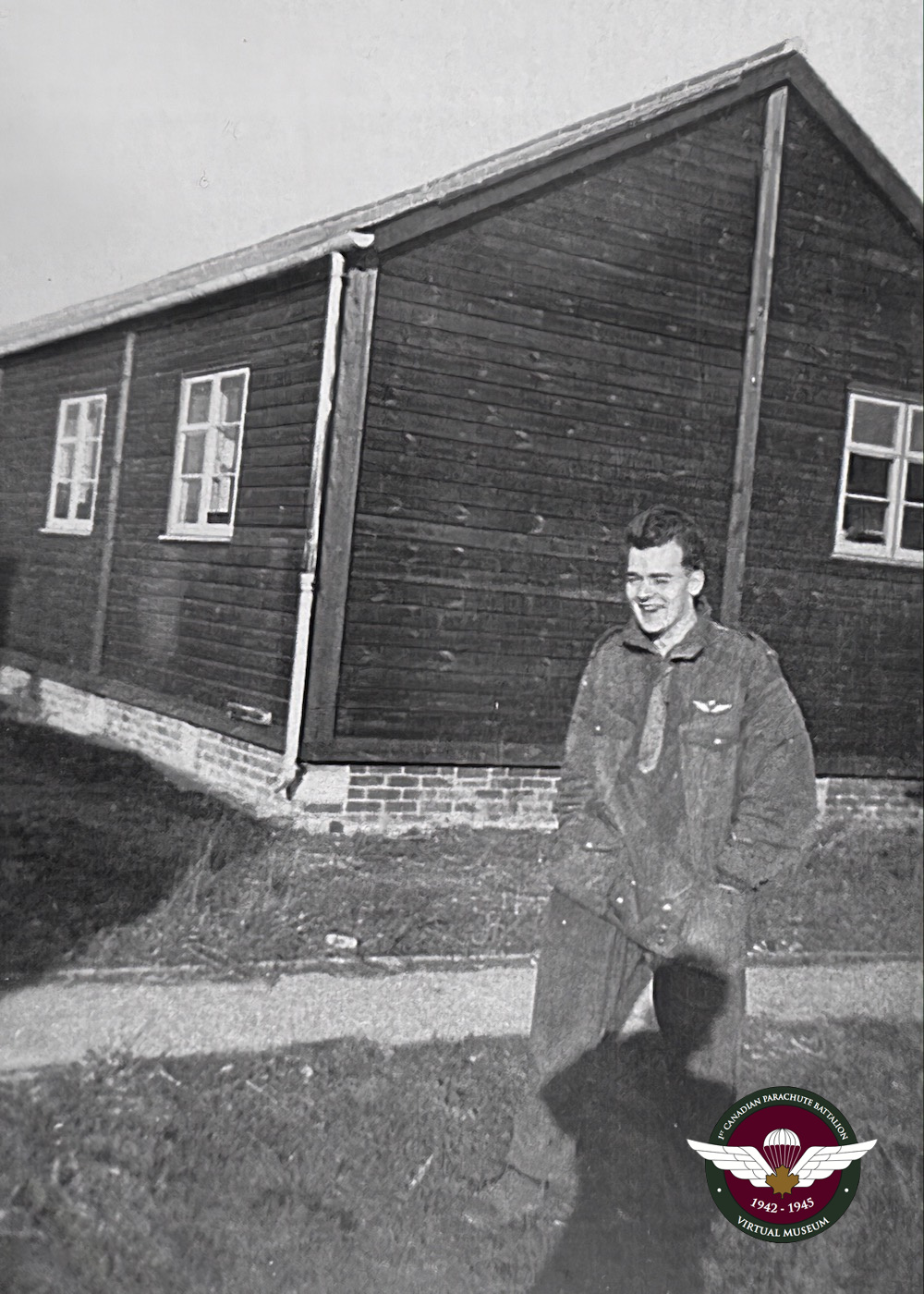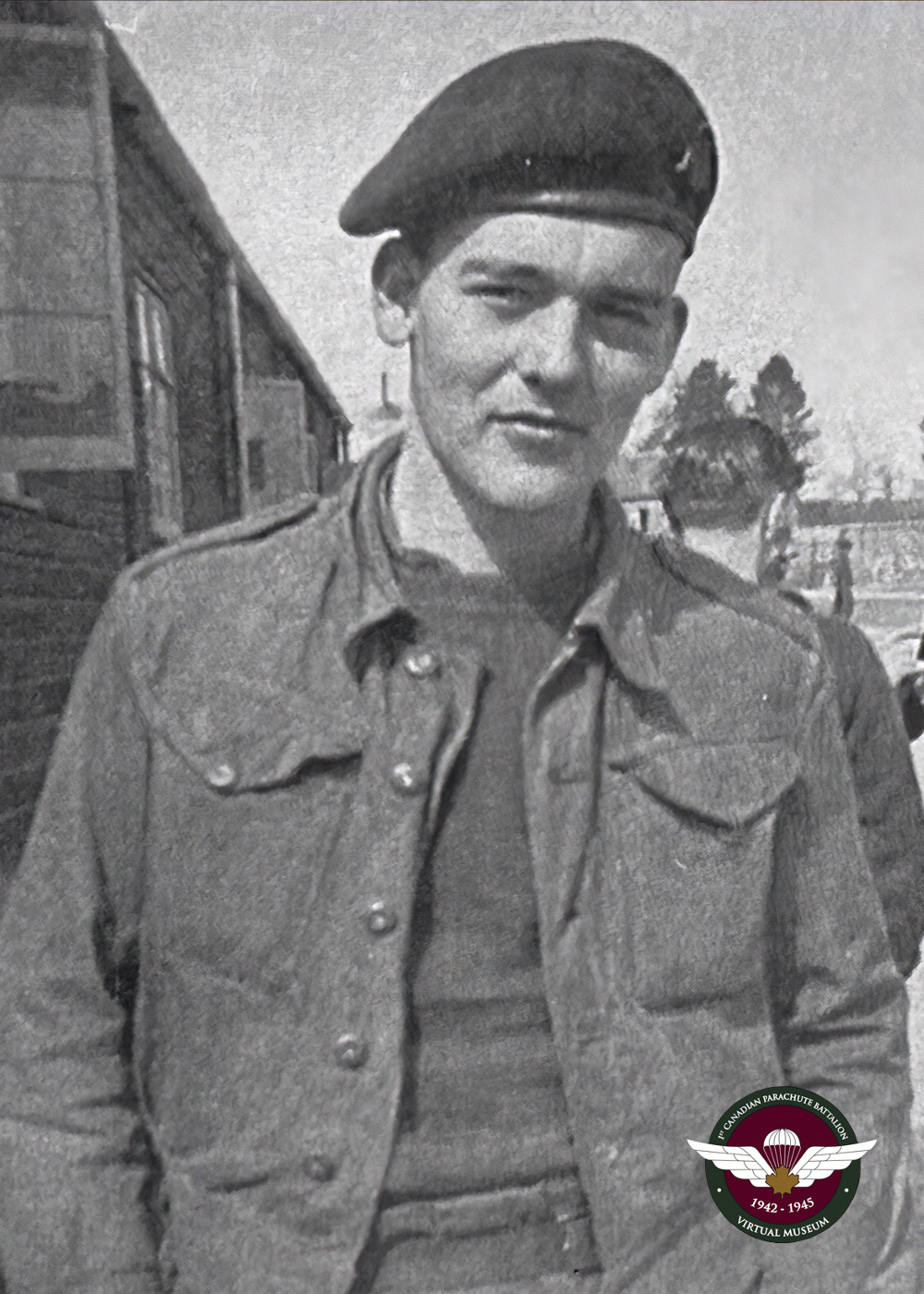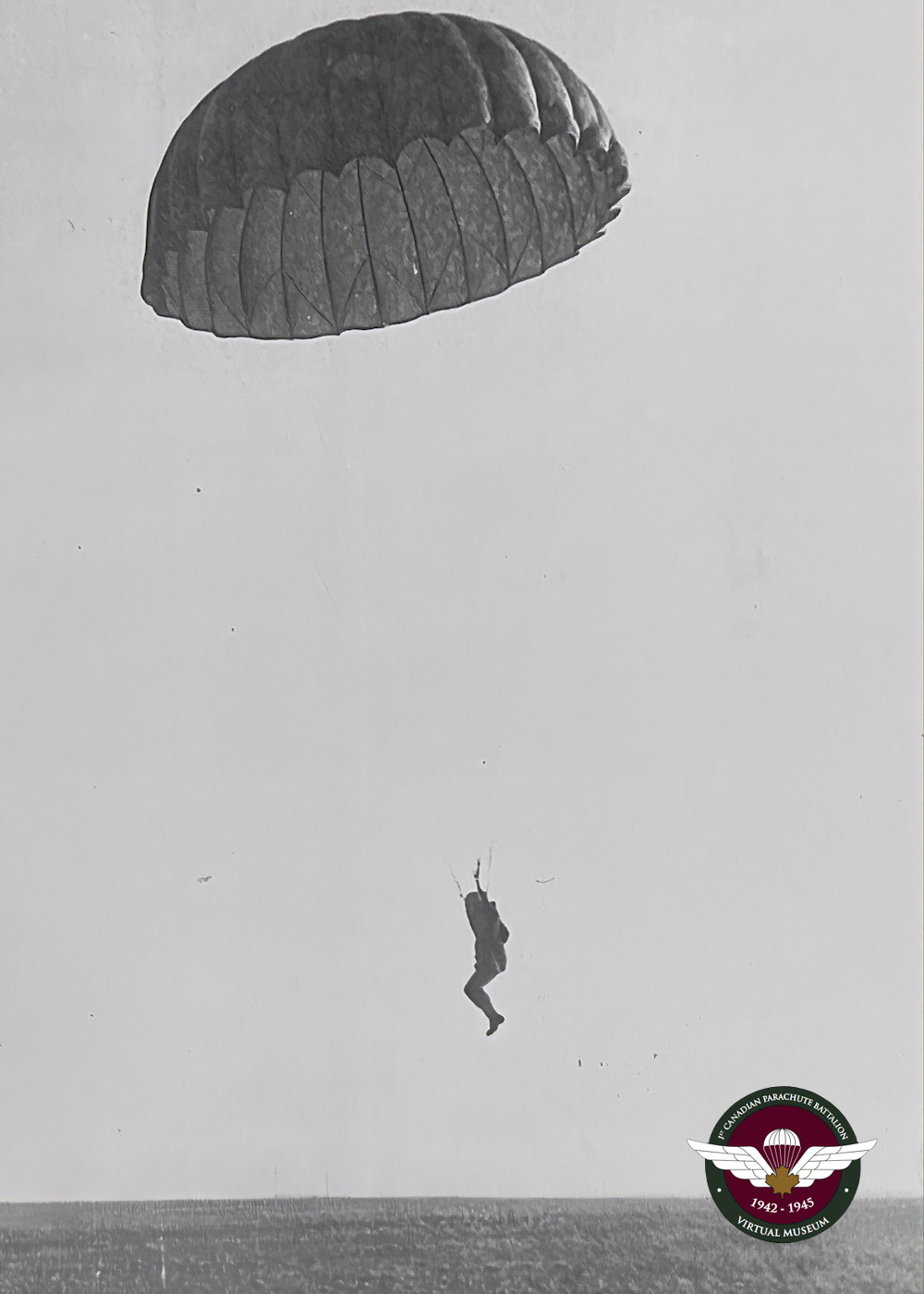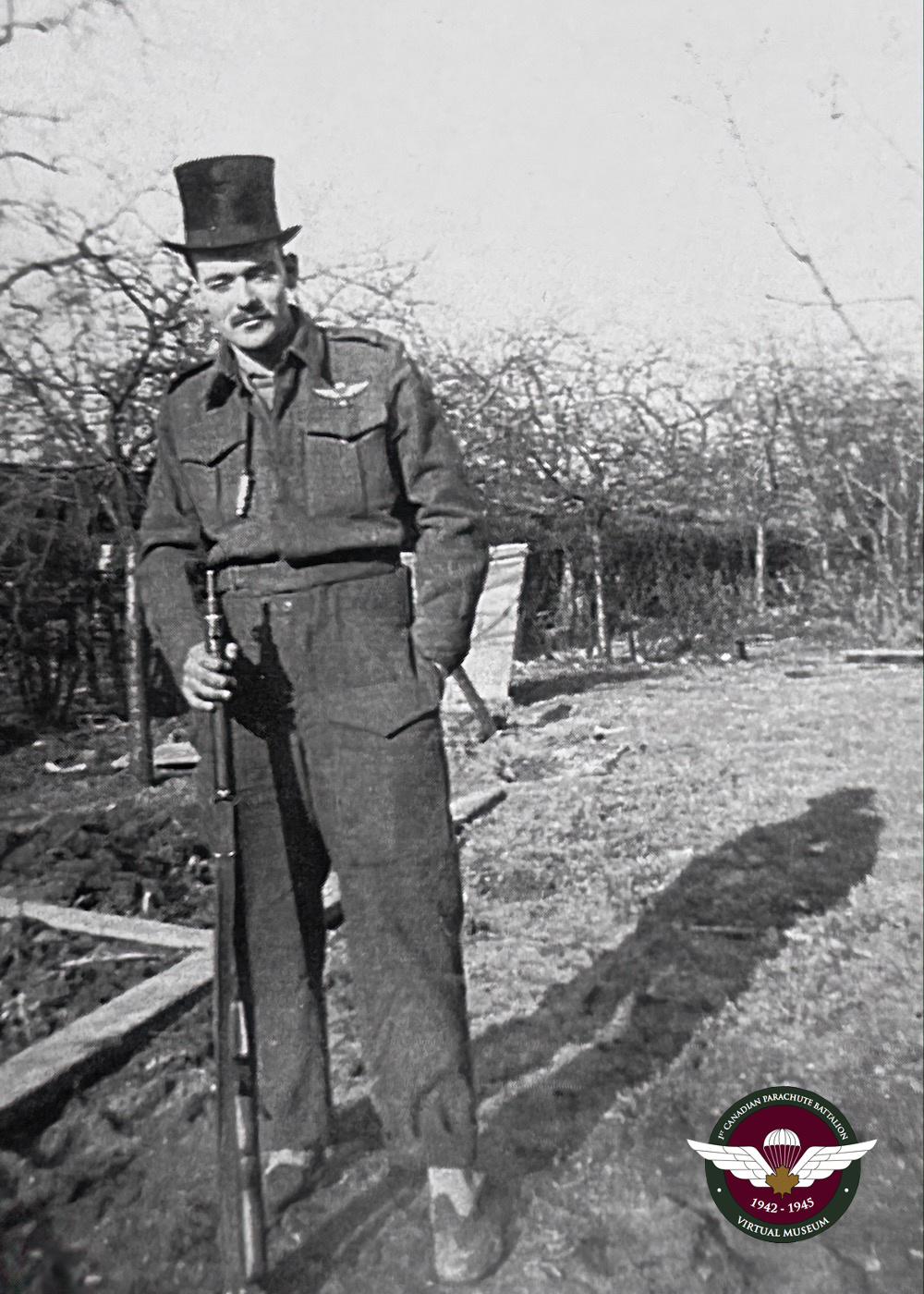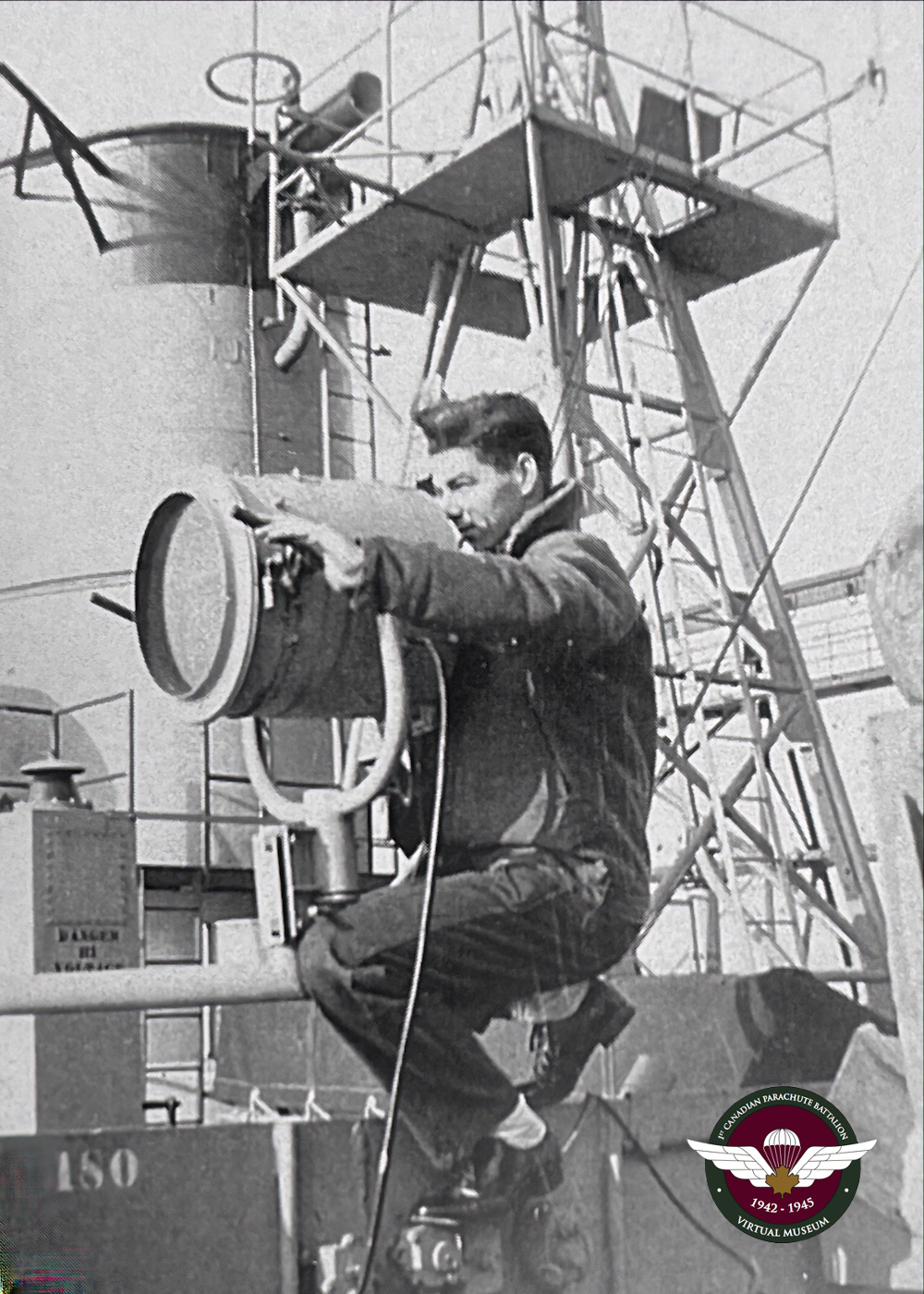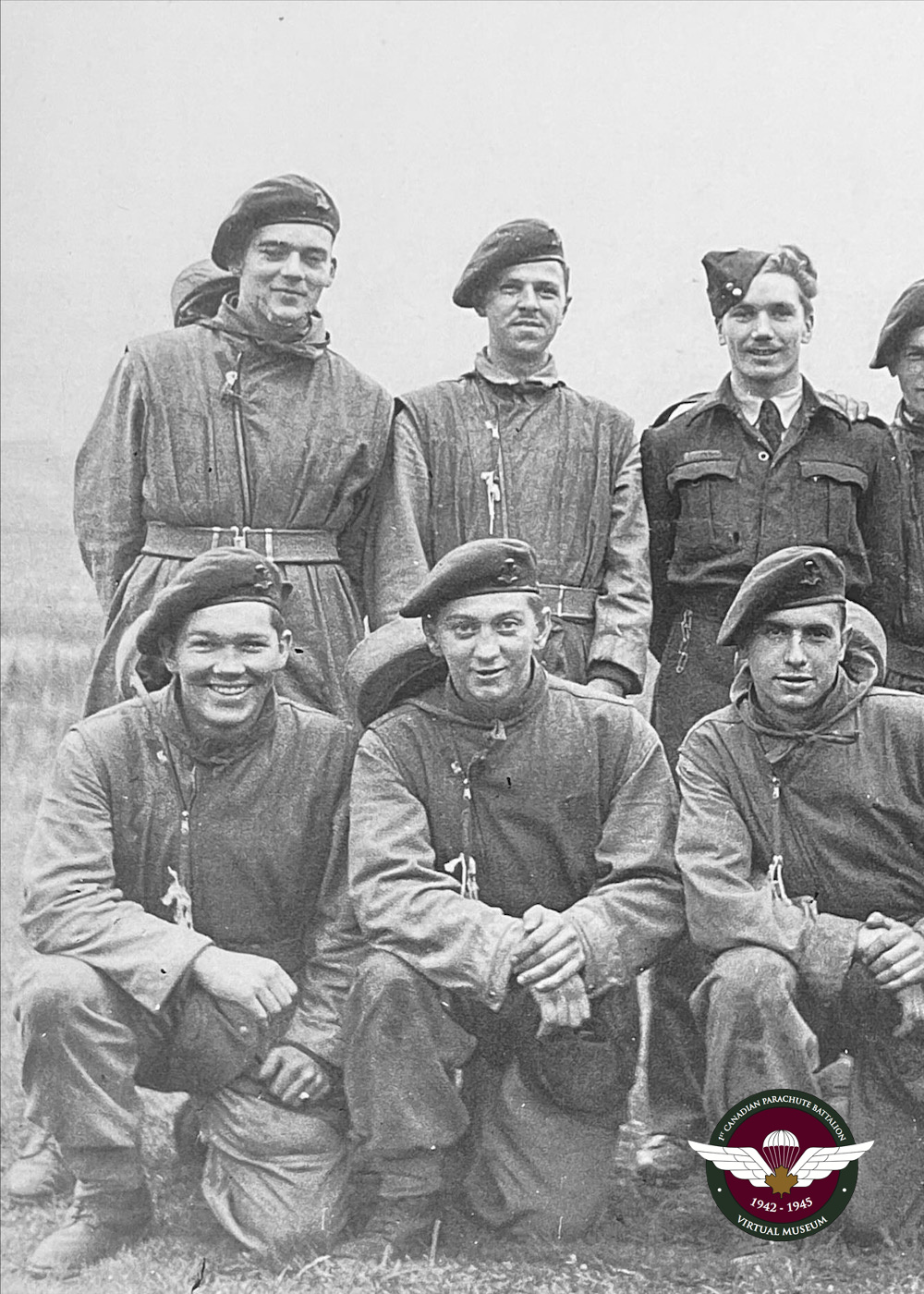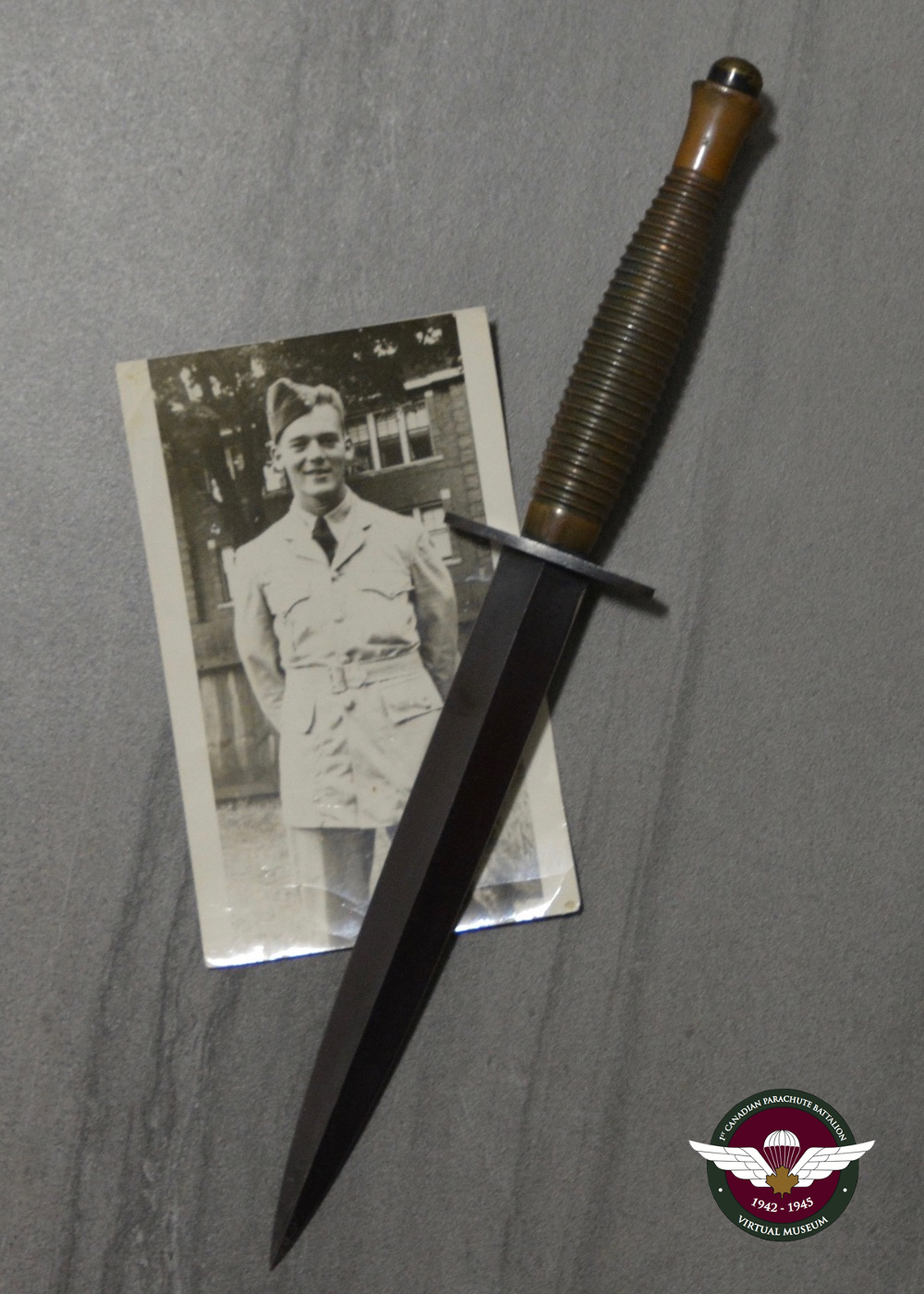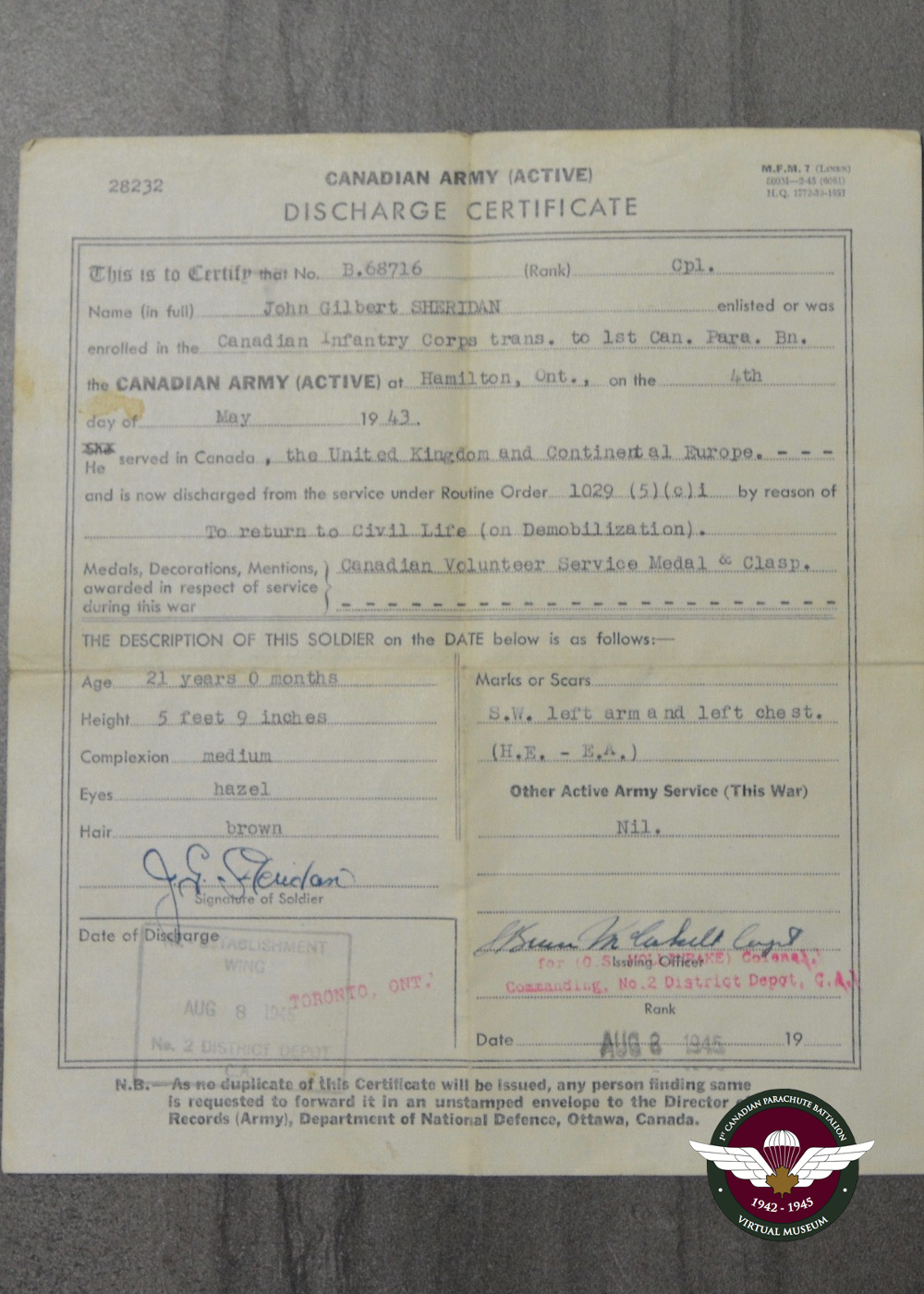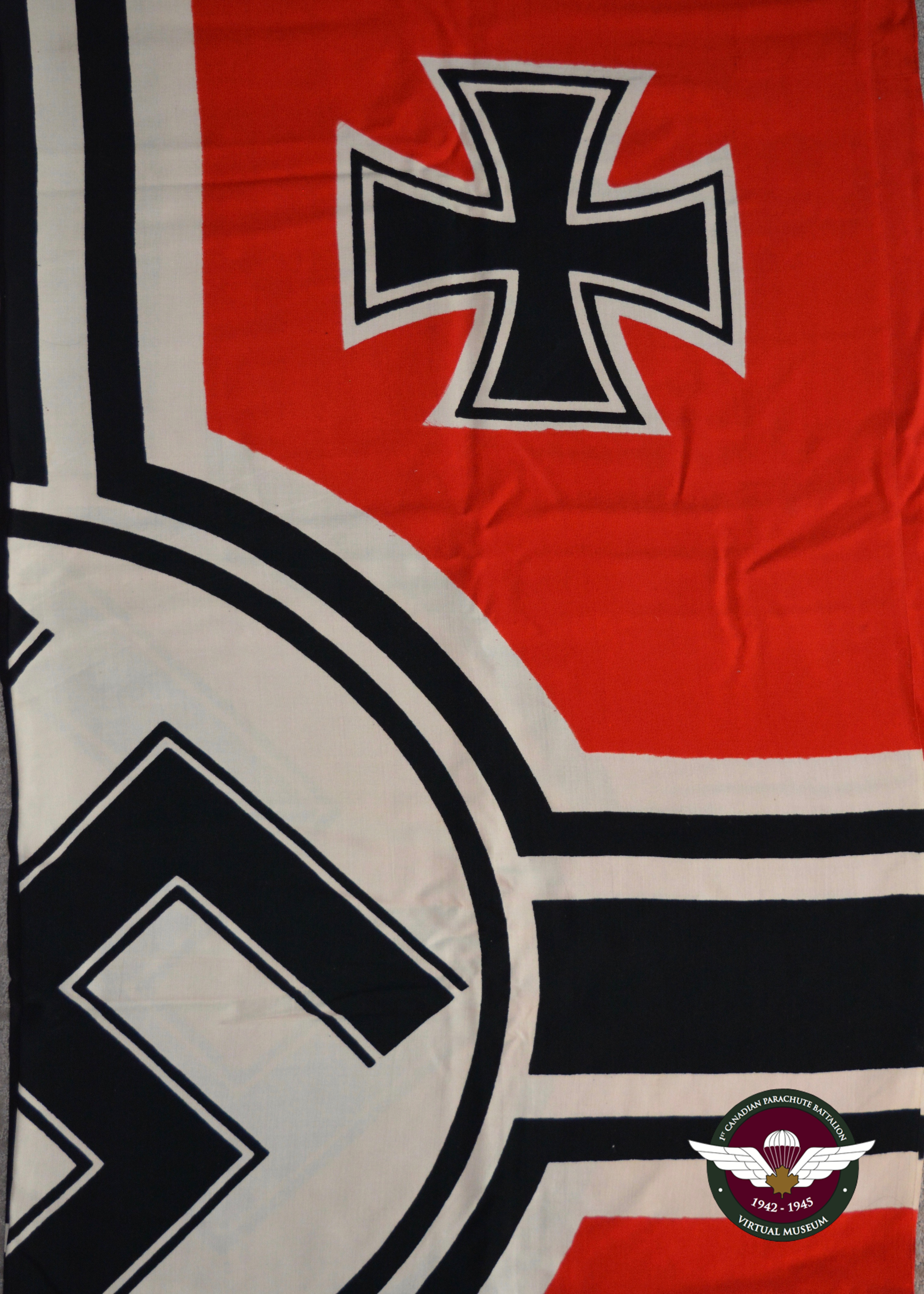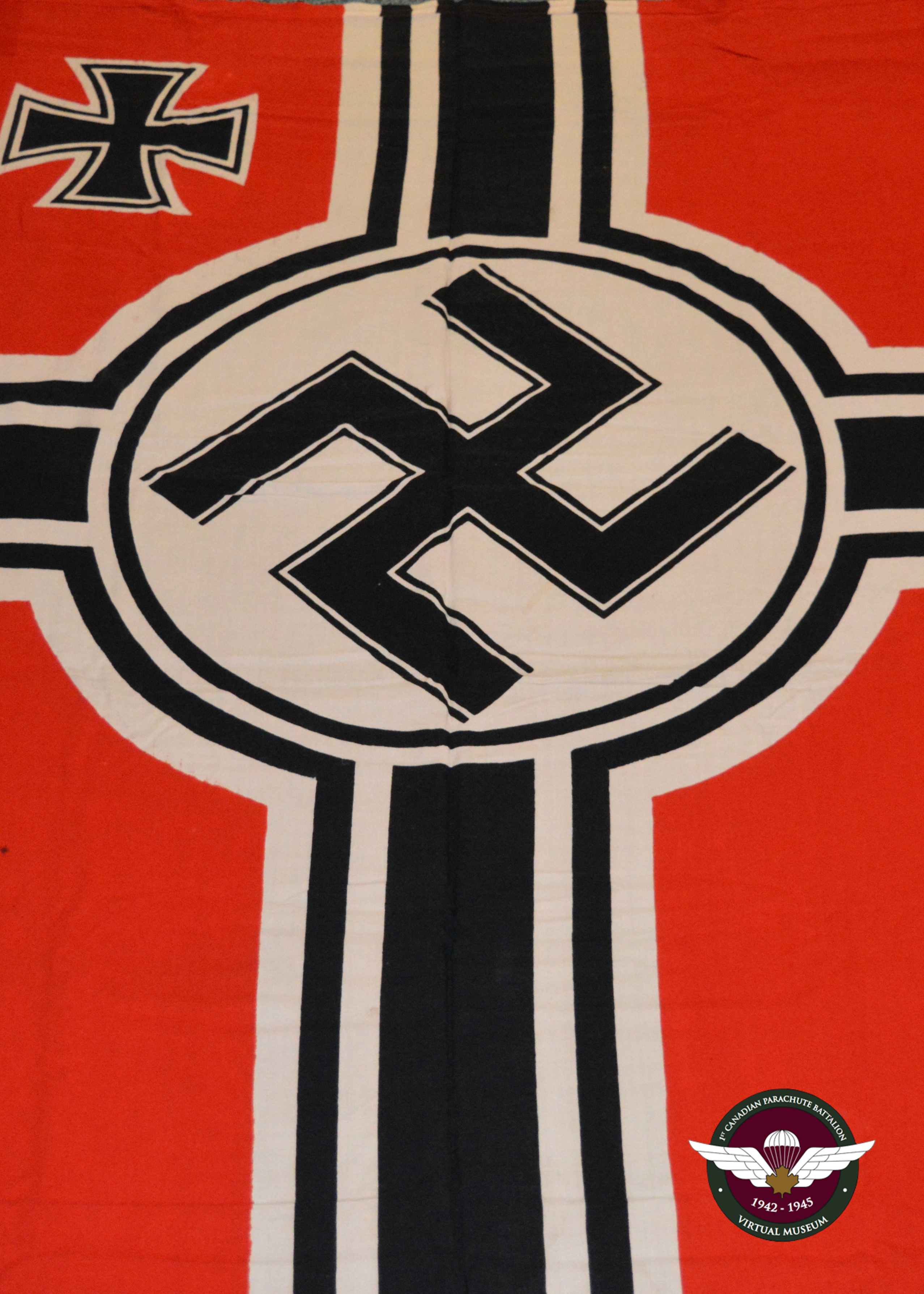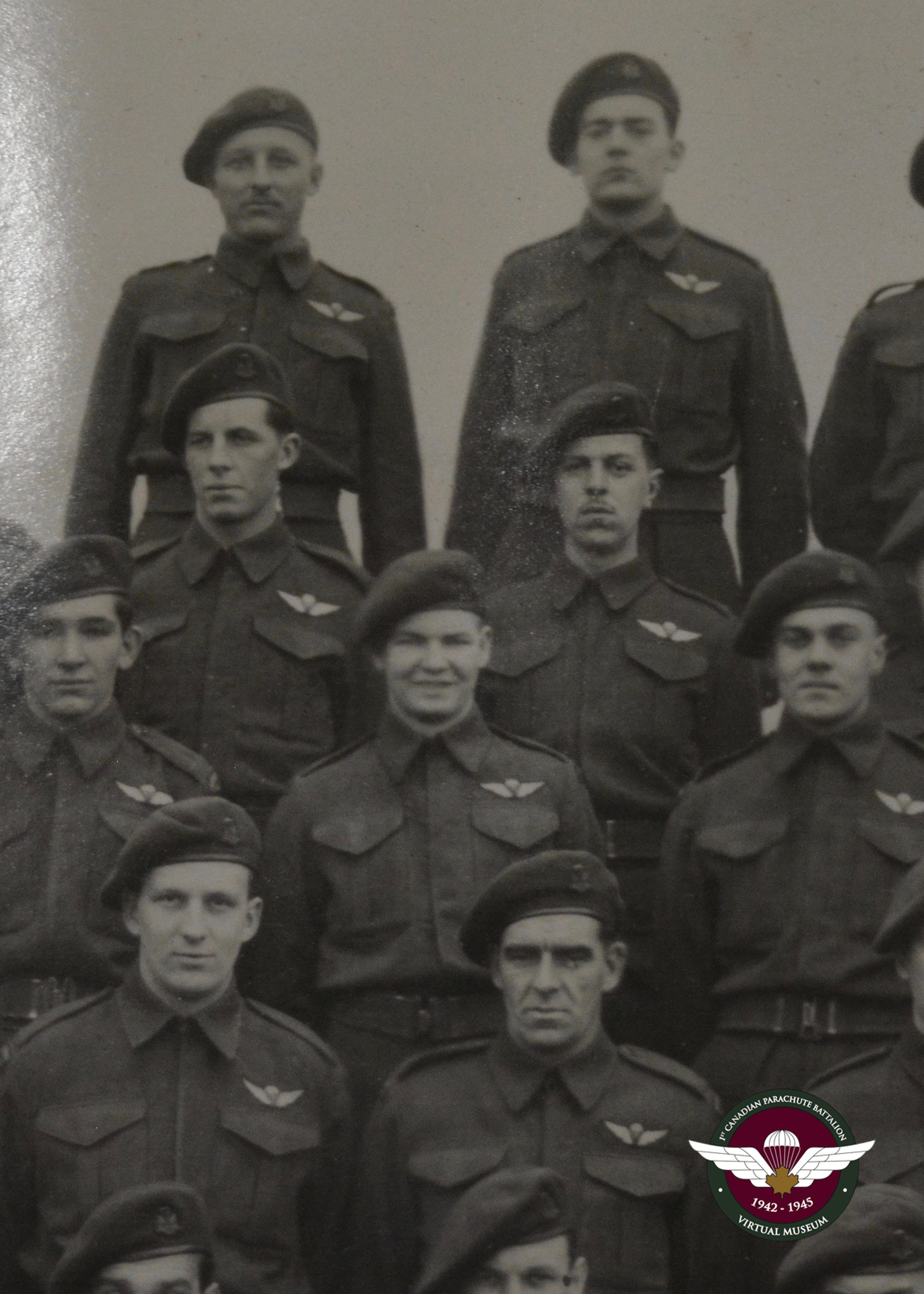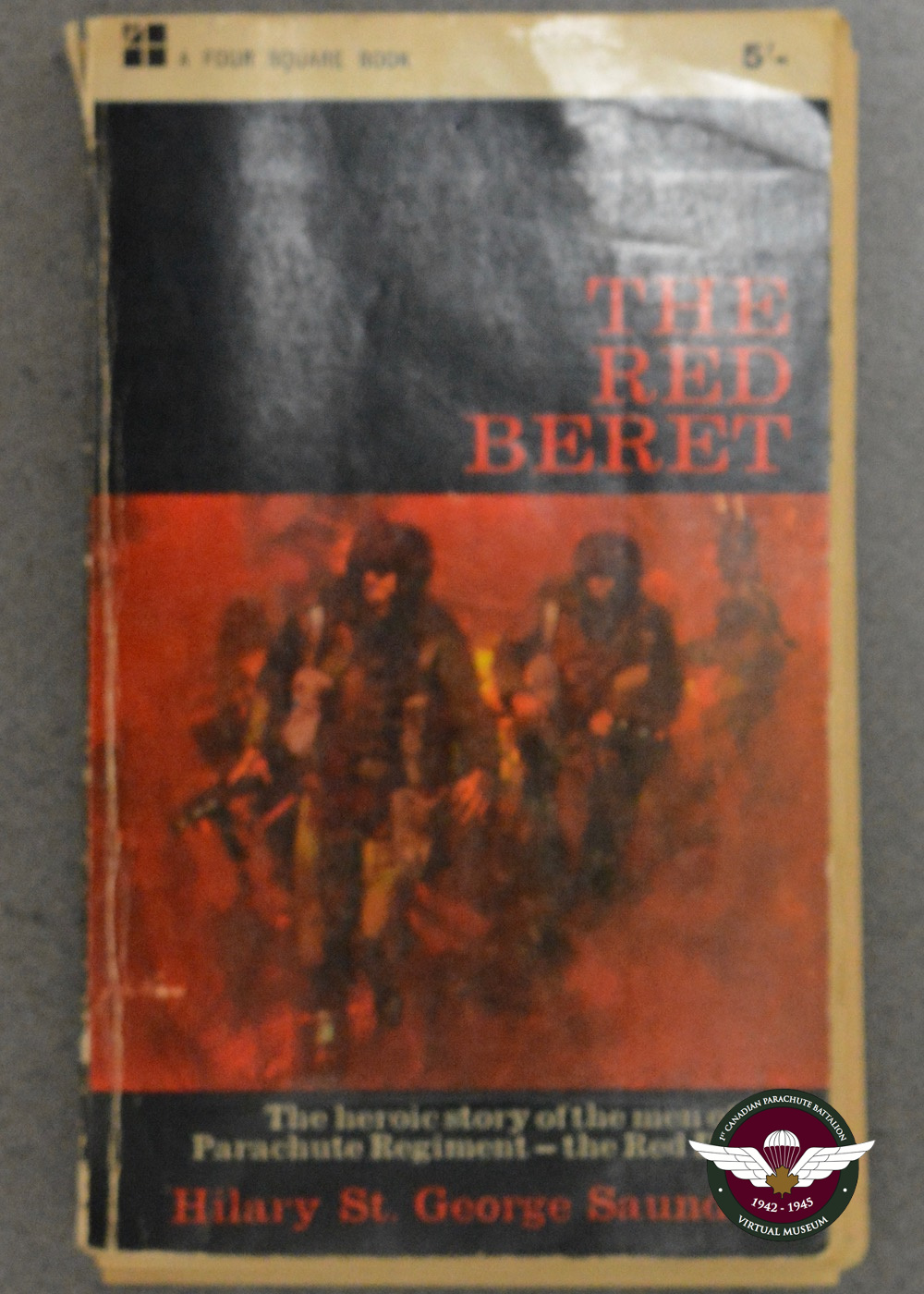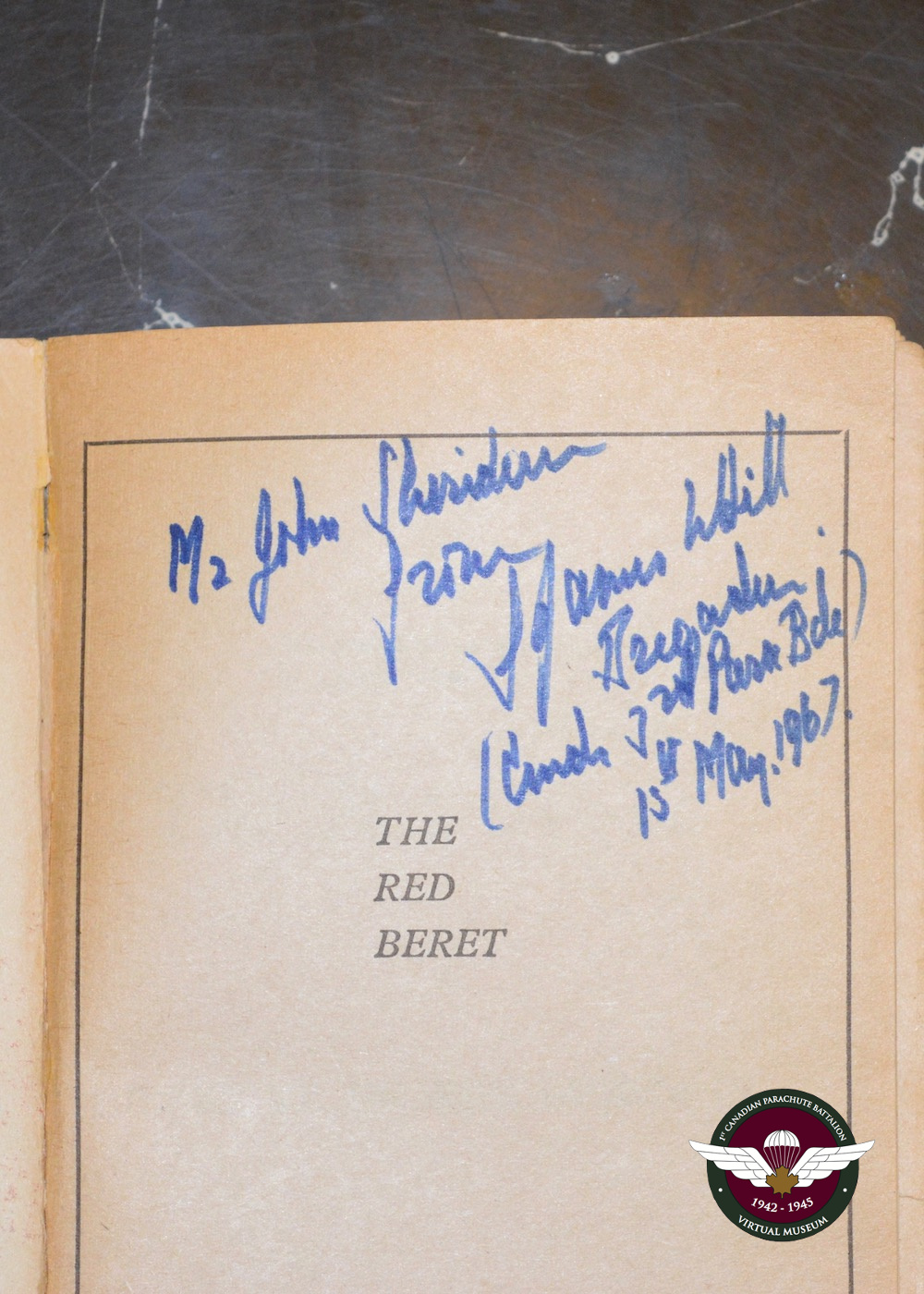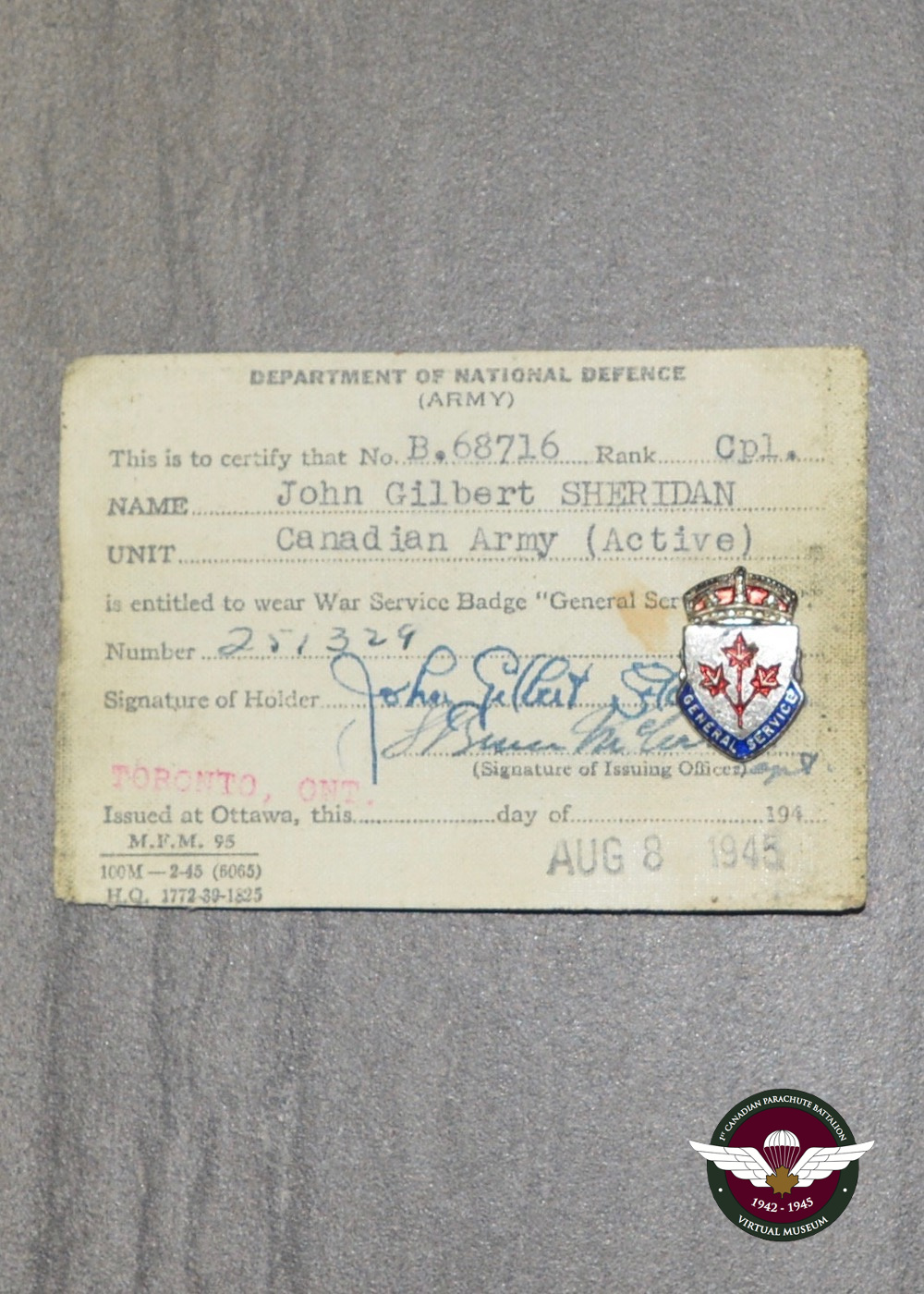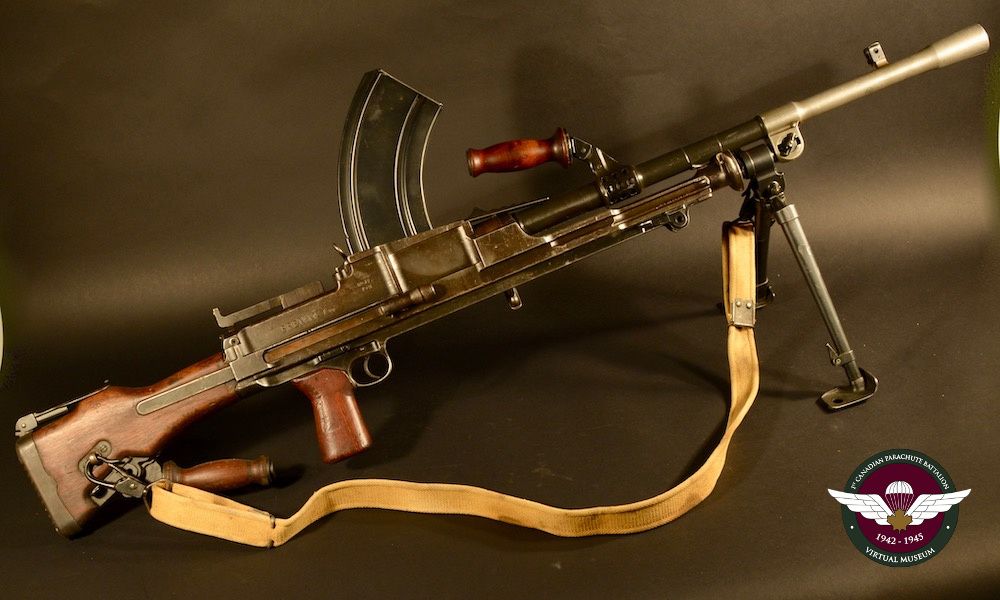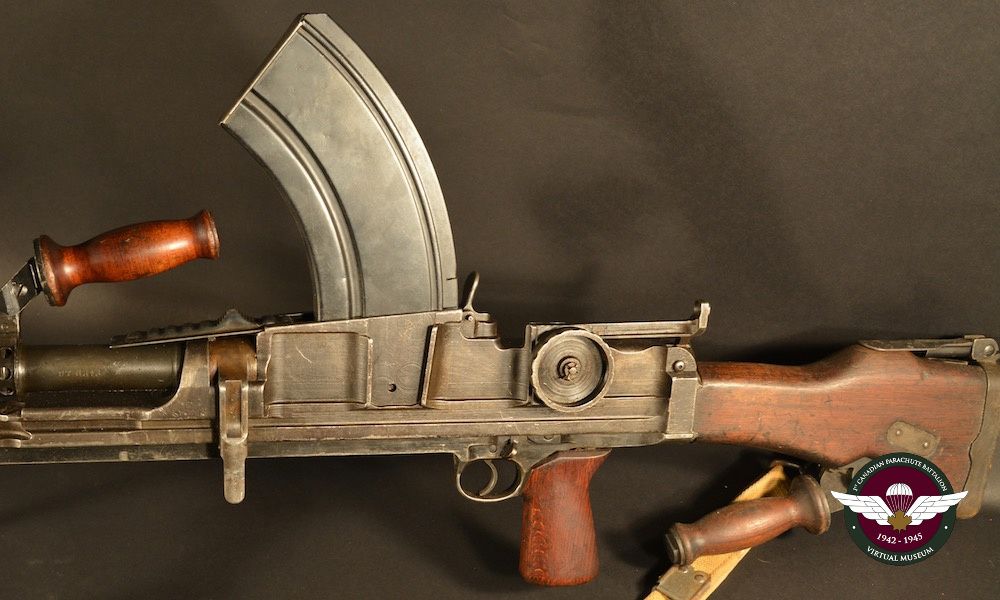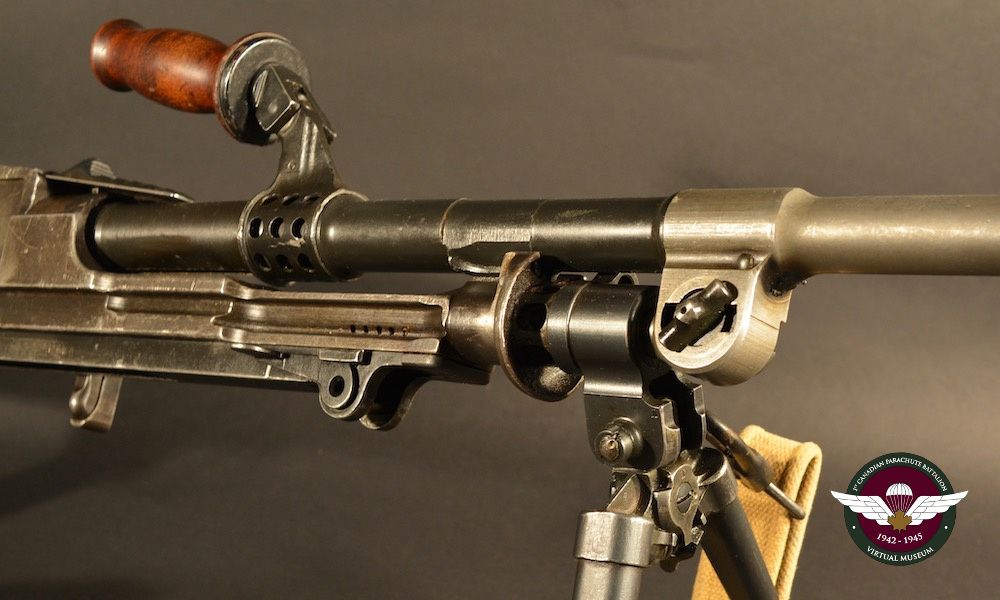Sergeant John Gilbert Sheridan
John Gilbert Sheridan was born on July 25th 1926 to his biological parents Bill and Hazel Sheridan. John and his older sister Madge were raised in Hamilton, Ontario where he attended Central High School. He was a good student, but also proved to be a natural athlete and participated in many sports during his teen years, excelling at football and receiving an award as his high school team’s most outstanding player
It was May 4th, 1943 and World War II was in full momentum. John, who was only 16 at the time, and eager to join the military, lied about his age and enlisted in the Canadian Infantry Corps. John left home shortly after to complete his basic training in Brantford and start his new journey. John, who was enamored with the idea of becoming a paratrooper, volunteered to transfer and was sent to the Parachute Training School in Shilo, Manitoba. John was determined to be part of this elite group of men, and successfully completed all the physical testing and psychological aptitude assessments required. John was then sent to Ringway Parachute School in England to take the rigorous parachute course. On October 18th, 1943, John proudly graduated from the parachute course, earning the coveted Parachute wings. John then joined the ranks of the elite 1st Canadian Parachute Battalion, where he remained in England training with the Battalion in preparation for the next mission.
On June 6th, 1944, It was time to put all that training to the test. John, as part of 1 Platoon, A Company, parachuted during the night into Normandy. Ten days later during intense fighting on June 16th, 1944, he was wounded. John survived the D-day invasion and returned to England to regroup and begin training replacement members with the Battalion. John would then go with the Battalion by sea to Ostend, Belgium, and then be transported by truck to the Ardennes to fight at what is known as the Battle of the Bulge. He then returned to England once again, to prepare for the next mission. On March 24th, 1945, John would parachute into Germany during Operation Varsity, which was a risky day drop onto an active enemy position under heavy enemy fire. The Battalion would continue on to secure its final objective, which was the race to Wismar before the Russians arrived.
John was one of the lucky ones who survived the war and was discharged on August 8th, 1945, ready to return to civilian life. John lost many friends during World War II. Given his experience, the war significantly impacted him for the remainder of his life. He needed to do some traveling and have some downtime to himself, so he purchased a motorcycle and traveled through the U.S. and down into Mexico for a period of time. He also traveled out west to British Columbia to do some more exploring before he would decide on his next move in life. John pursued post-secondary education at Queens University in Kingston, Ontario. He studied Physical Education while he also had the opportunity to pursue his passion, playing football. While attending Queens University, John met a young woman named Lorraine Whitney and he knew she was the one. They married in 1950. John and Lorraine moved to Sarnia, Ontario where he started a long career in the oil business. He would climb the ranks of the organization, where he held many positions in management.
While in Sarnia, John continued his passion for playing football with the Sarnia Imperials. They were the Ontario Rugby Football Union (ORFU) champions in 1951 and went on to play the Ottawa Roughriders in the Grey Cup semi-final, which they lost. John and Lorraine relocated to Hamilton, Ontario, and started their family, having three boys named Geoff, John, and Brad. John was a huge fan of all sports and steered his own sons into a variety of sports as well. Due to John’s employment, he would be relocated several times, from St. Catharines to London, to Kingston, and finally to Kitchener in 1968 where he would spend the rest of his life. Even at the age of 48, John remained very active and often played handball at the local YMCA and ran in the Oktoberfest Marathon in Kitchener, Ontario. John learned about the Battalion's reunion in Normandy commemorating the 30th anniversary of D-Day in 1974, and he attended and visited the graves of former friends that never returned home. Despite being physically fit, he discovered a heart condition that required him to have a pacemaker implant in 1976.
In 1977, John connected with three of his old Battalion members, Bob Sullivan, Walter “Spike” Romanow, and Dave Torrence and they arranged a mini-reunion with their wives in Maui, Hawaii. The four men and their spouses had an incredible and memorable adventure, which they termed a trip of a lifetime. Not even a week after returning from Hawaii, on April 5th, 1977, John had a massive heart attack and passed away at home. An interesting detail about the night that John died, was that he was reading a copy of "The Red Beret" by Hilary St. George Saunders which is the story about the British Parachute regiment. The book was given to him by Brigadier James Hill and inscribed by him as well.
If you have taken the time to read the biography of Sergeant John Gilbert Sheridan, then you have kept his memory alive.
Information and artifacts courtesy of Geoff Sheridan.
Bren Light Machine gun
This is a Bren Light Machine Gun, Sergeant Sheridan would have used one similar to this one during training and while serving overseas. This magazine-fed weapon system uses 303 calibre ammunition. It weighs 25 lbs with a firing rate of 500 rounds per minute with an effective range of 600 yards.
